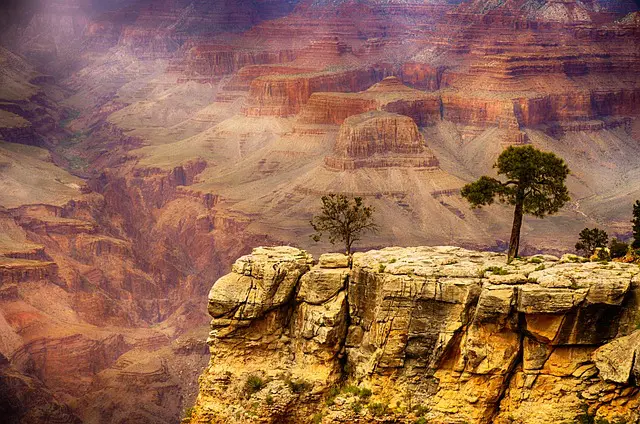
03 Jul Arizona Treasures: The Grand Canyon
When legal files are surrounding you, the to do list is piling up, and things seem a bit overwhelming, a break might be just what you need. But where do you go? Phelps LaClair are not only avid legal experts on estate planning, we are also avid hikers and explorers of the great outdoors. Not only that, we also want to help you find the treasures that Arizona holds. The first one to discover may be easy to guess, the Grand Canyon.
History
The Grand Canyon, located in Northern Arizona, is one of the most spectacular sights in the world. It spans 277 miles long, 18 miles wide and is over a mile deep. The vastness of this canyon is epic. There is nothing that can rival the beauty that your eyes try to capture when you see it. In the base of the Grand Canyon, the Colorado river runs swiftly; cutting channels in the walls of the canyon. The raging river continues to deepen and widen the canyon by sheer power wearing at the rock walls that surround it.
The Grand Canyon has seen inhabitants for thousands of years where Native Americans took home and refuge. There have been pilgrimages made to the canyon on a regular basis by the Pueblo people who view the canyon as a holy site. The first known European to lay their eyes upon the canyon was in 1540 by a Spanish explorer.
With such rich history of people making their home amongst the canyon walls, there has been many archeological discoveries.
Archeology
Knowing how people lived, worked, and created community is one of the greatest fascinations. Increased fascination includes those who lived in the Grand Canyon thousands, to hundreds of years ago. A couple of interesting facts about life in the canyon include:
- The oldest human artifacts found in the Grand Canyon are around 12,000 years old.
- Due to the archaic finds, there has been determined to be different periods of living within
the canyon from the Paleoindian period to a deeper creation of village life in the formative period.
There currently are 9 archeological sites along the colorado river to learn more about those who have lived in the canyon. The sites are meant to preserve the culture, learn more about their way of living, grow crops, and sustain life. There are 11 tribes currently overseeing the preservation and education of the culture of the tribes living in the Canyon.
The Grand Canyon is a sight you cannot miss. It is not the largest canyon in the world, but with the natural rock colors, it is a breathtaking view. We here at Phelps LaClair love adventure of the outdoors and what is created around us, not just estate planning. We encourage you to step out and see one of the most brilliant sights, that will leave you wanting more.
Images used under creative commons license – commercial use (01.06.2025). Image by cecilevanmeensel from Pixabay.


